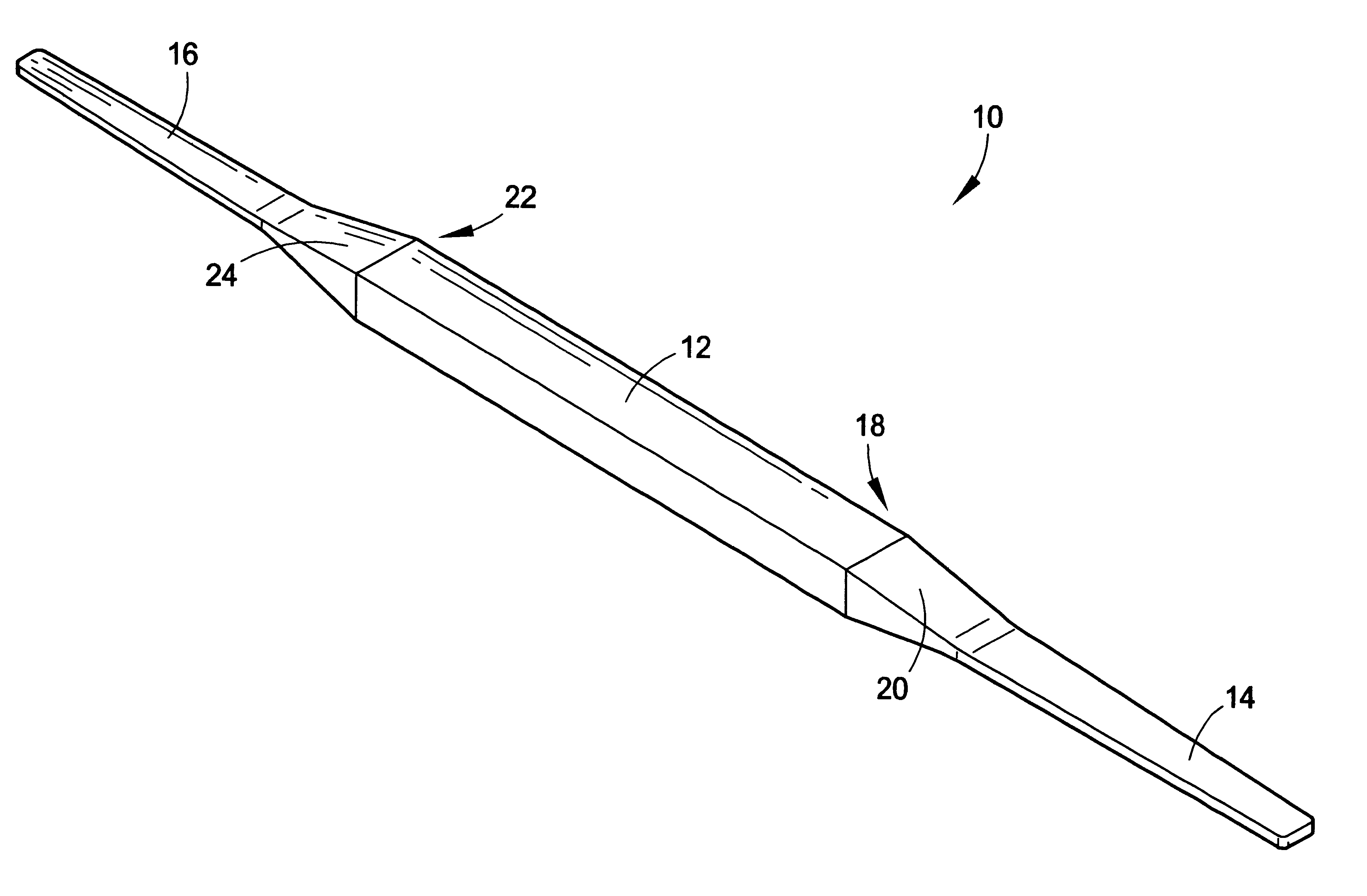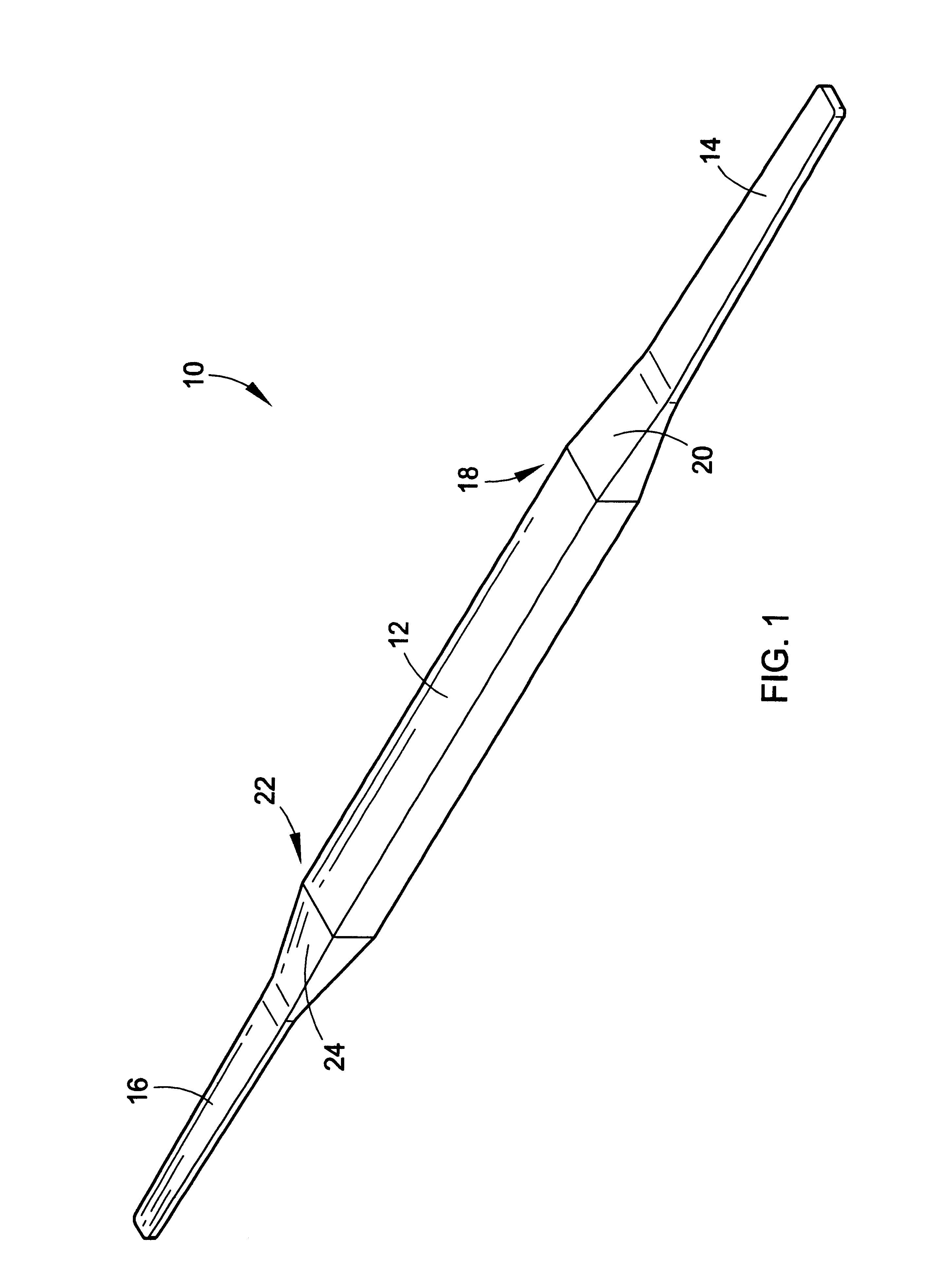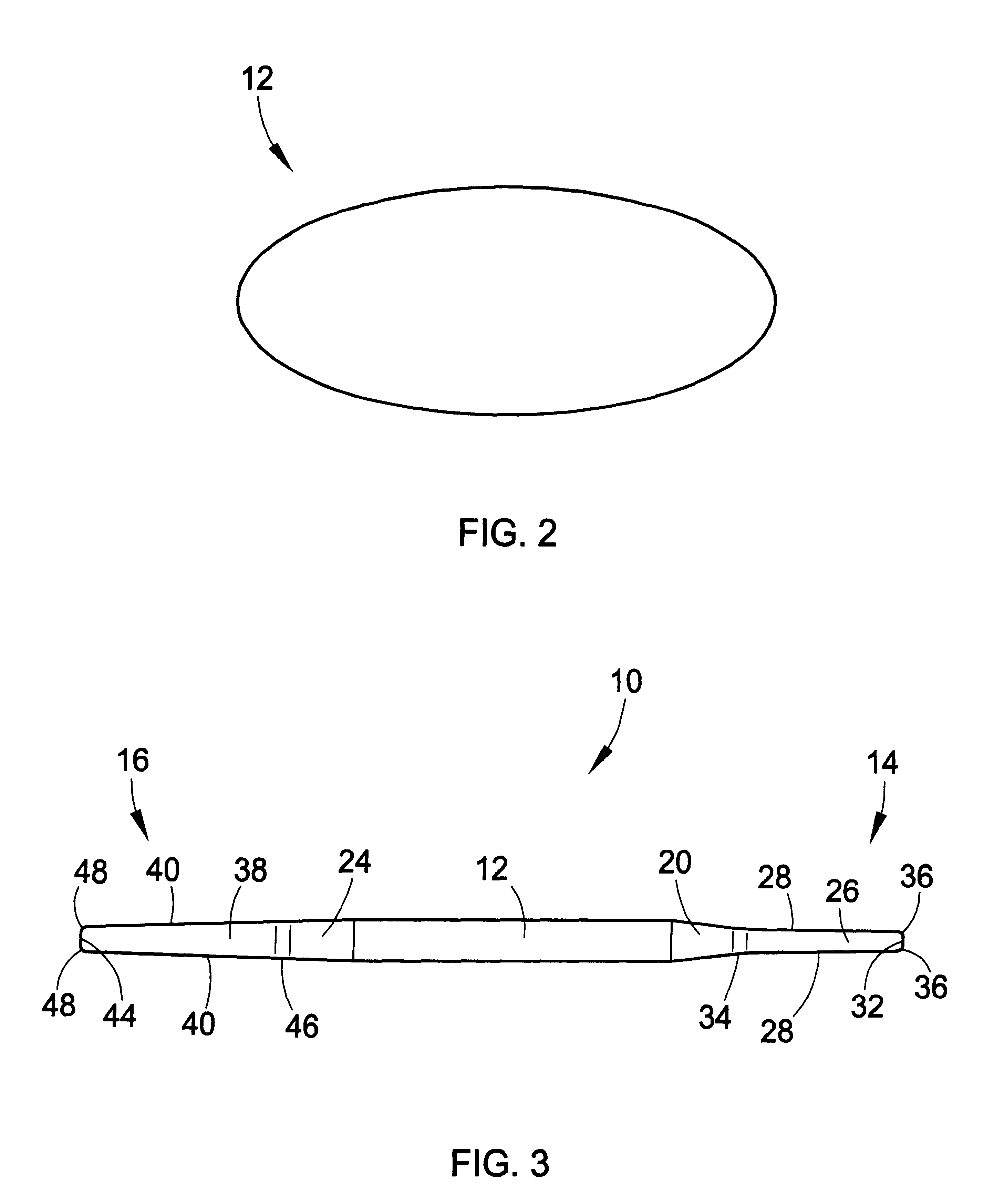Dental device for cleaning between teeth
a dental device and dental technology, applied in the field of dental devices, can solve the problems of affecting the health of people's teeth, gums, and mouth, and affecting the health of people's mouth, and affecting the health of people's mouth, and a person's mouth is more susceptible to the effects of bacteria
- Summary
- Abstract
- Description
- Claims
- Application Information
AI Technical Summary
Benefits of technology
Problems solved by technology
Method used
Image
Examples
first embodiment
Referring to FIG. 1, a dental device 10 constructed in accordance with the invention broadly comprises a center section 12 flanked by a first picking section 14 and a second picking section 16. The center section 12 is approximately sixty thousands of an inch thick, approximately one tenth of an inch wide, and approximately one inch long. The center section 12 retains its thickness and width throughout its length. The center section 12 is wider than it is thick allowing a person to properly align the device 10 without needing to look at the device 10. The center section 12 may be elliptical, rectangular, oblong, or any other shape that can assist the person in aligning the device 10 without having to look at the device 10.
Adjoined to a first end 18 of the center section 12, is a first transition 20. The first transition 20 converges from the center section 12 to the first picking section 14 in its approximately one hundred and eighty-eight thousands of an inch length.
Similarly, adjo...
second embodiment
FIG. 2 shows the center section 12 of a second embodiment with an elliptical cross-section. The elliptical cross-section is preferred, since it allows a person to easily, comfortably, and quickly rotate the device 10 along its longitudinal axis controlling the alignment the device 10. Rotating the device 10 allows the person to control the orientation of the picking sections 14,16 as the device 10 is worked back, forth, up, and down in gaps between the person's teeth.
In a third embodiment, the picking sections 14,16 may have a slightly tapered thickness. The slightly tapered thickness may be included in order to, for example, strengthen the picking sections 14,16. While the slightly tapered thickness may lend strength, it may limit how far each picking section 14,16 may be inserted between teeth. This may limit the usefulness of the device 10. Therefore, in the third embodiment, the picking section's 14,16 thickness may be constantly tapered up to five thousands of an inch along its...
fourth embodiment
In a fourth embodiment, the picking sections 14,16 may have a constant width. The constant width may be included in order to, for example, strengthen the picking sections 14,16 or simplify manufacturing. While the constant width may lend strength, it may limit the usefulness of the device 10.
In use, a person holds the device 10 by the center section 12 and inserts the first picking section 14 into gaps between his or her teeth. The person works the device 10 into each gap using the roughened surfaces 50 or angles of the first picking section 14 to disturb bacteria and other foreign substances. The person can also rotate the device 10 back and forth along its longitudinal axis. When necessary, the person can insert the second picking section 16 between narrower gaps, thereby reaching areas unreachable with the first picking section 14.
It can be seen, that the device 10 includes a sturdy center section 12 that allows the person to use the device 10 without putting their fingers into t...
PUM
 Login to View More
Login to View More Abstract
Description
Claims
Application Information
 Login to View More
Login to View More - R&D
- Intellectual Property
- Life Sciences
- Materials
- Tech Scout
- Unparalleled Data Quality
- Higher Quality Content
- 60% Fewer Hallucinations
Browse by: Latest US Patents, China's latest patents, Technical Efficacy Thesaurus, Application Domain, Technology Topic, Popular Technical Reports.
© 2025 PatSnap. All rights reserved.Legal|Privacy policy|Modern Slavery Act Transparency Statement|Sitemap|About US| Contact US: help@patsnap.com



